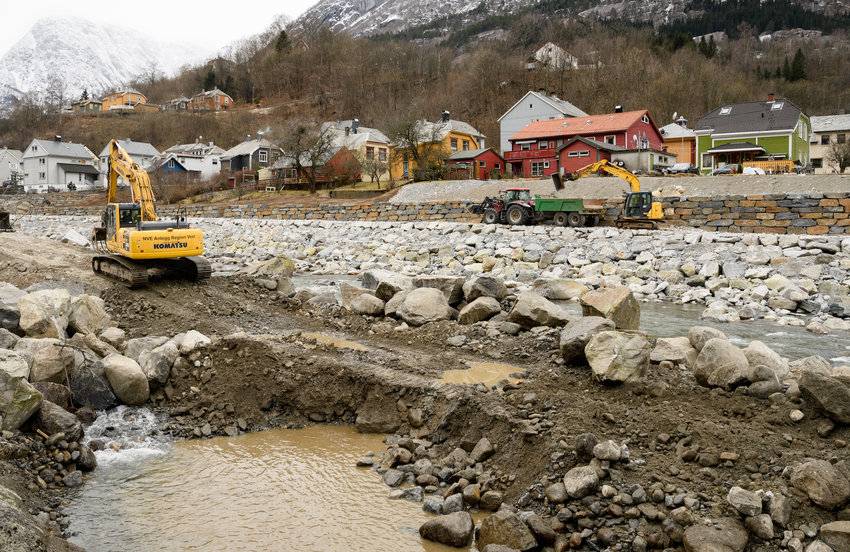Yue Shi’s thesis “Statistical modeling of climate risk in home insurance claims” examines how climate change affects property damage. She used statistical models to determine the connection between insurance claims and weather-related factors.

Yue Shi, PhD student at NHH and researcher in Climate Futures, defended her thesis at NHH the Norwegian School of Economics 24 April 2025. The thesis is based on high-resolution historical weather data from the Norwegian Meteorological Institute and an insurance dataset from Tryg Insurance, a leading insurance company in Norway. Her research reveals an increasing risk of water damage and significant geographical differences:
– Insurers should consider adjusting premiums based on local weather history and seasonal variation. Climate-related risk isn’t the same everywhere, and the timing of adjustments also matters, says Yue Shi in an interview with NHH Bulletin.
In the first two chapters Yue Shi explores non-catastrophic rainfall-related home insurance claims covered by the insurance company. The third chapter extends the analysis to offer a comprehensive examination of water damage to private buildings, including claims from both the Natural Perils Pool and the insurance company.
Chapter 1. Assessing the dependence between extreme rainfall and extreme insurance claims: A bivariate POT method
The first chapter delves into the rising number of insurance claims due to extreme rain events. Scientific evidence suggests that extreme weather events are becoming more frequent and intense, posing challenges for the insurance industry. Average conditions often hide significant variations at the extremes, which can behave differently. The IPCC’s Sixth Assessment Report highlights that changes in precipitation extremes differ greatly from average precipitation, emphasizing the importance of focusing on extremes for effective climate risk management.
Extreme weather events are categorized into catastrophic natural disasters and non-catastrophic local extreme events. Despite causing significant losses, non-catastrophic events receive less attention in research. This chapter focuses on these impactful local events, specifically heavy rain in Norway’s two largest municipalities. Using advanced statistical methods, the study finds a strong link between extreme rain and high numbers of home insurance claims. Regional differences in rainfall are identified as key indicators of home insurance risk. These insights help develop customized pricing models and robust capital reserve management, contributing to the insurance industry’s long-term sustainability in a changing climate.
This paper is published in the journal Risk Analysis (http://doi.org/10.1111/risa.70033)
Chapter 2. Hidden semi-Markov models for rainfall-related insurance claims
(Co-authors: Antonio Punzo, Håkon Otneim and Antonello Maruotti)
This chapter examines the timing and patterns of home insurance claims due to rain damage in Norway. Using a hidden semi-Markov model (HSMM), the study captures the complex and unpredictable nature of these claims. By testing various statistical distributions, the researchers identify a flexible model that accurately represents insurance losses from rain-related incidents.
The findings highlight the importance of considering the temporal aspects of weather-related insurance claims. The proposed HSMM effectively captures these temporal dynamics and reveals a worrying trend: the risks associated with heavy rain have increased from 2004 to 2020, aligning with the evidence of a changing climate. This information is crucial for insurance companies, helping them to model risks accurately and manage uncertainties. The study emphasizes the need for insurance companies to adapt their strategies to address the growing risks of heavy rain and to continuously monitor and reassess these risks. Ultimately, this research contributes to a better understanding of climate risk in the insurance industry and supports the development of resilient and sustainable insurance practices.
This paper is published in the journal Insurance: Mathematics and Economics (https://doi.org/10.1016/j.insmatheco.2024.11.008).
Chapter 3. Insurance in a Changing Climate: A Retrospective Study of Water-Related Claims and Pricing Strategies in Norway (co-authors: Geir Drage Berentsen and Håkon Otneim)
The final chapter offers an in-depth analysis of water-related insurance claims for private buildings, using data from both the national insurance pool and the insurance company. By modeling daily number of claims, the study captures a wide range of weather impacts, from localized heavy rainfall incidents to large-scale storms. This is one of the first studies to systematically investigate both types of claims together.
Unlike previous studies that predict climate change impacts using future projections, this research takes a retrospective approach to reconstruct historical claim profiles where direct data is unavailable. The study proposes an effective statistical model to address the zero-inflation and overdispersion inherent on claim count data, leveraging high-resolution weather data to reconstruct historical claims.
The results show geographical variations in weather-related risks for home insurance in Norway’s two largest cities and identify seasonal patterns in claims. The chapter also evaluates reactive and proactive pricing strategies based on the retrospective analysis, offering valuable insights for insurers to adjust premiums in response to evolving climate risks. This research provides a robust framework for integrating weather data into actuarial modeling and helps the insurance industry adapt to a changing climatec

